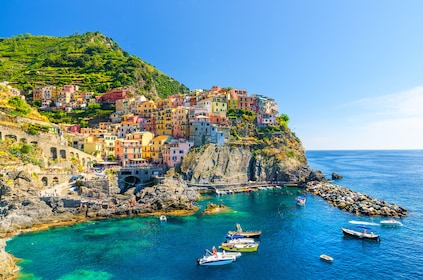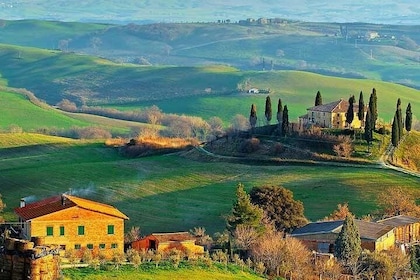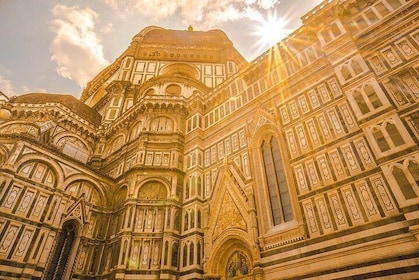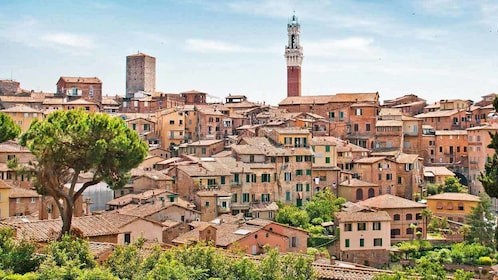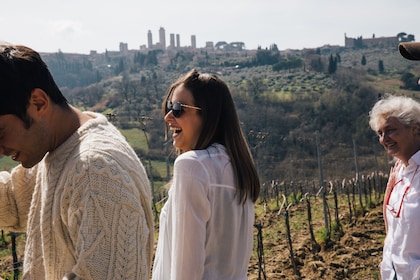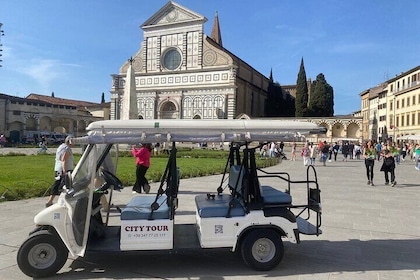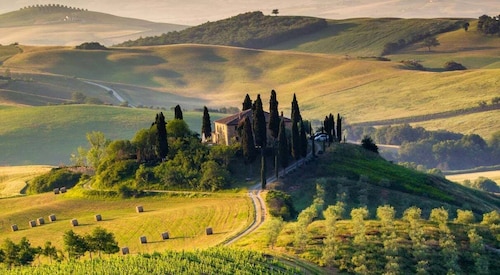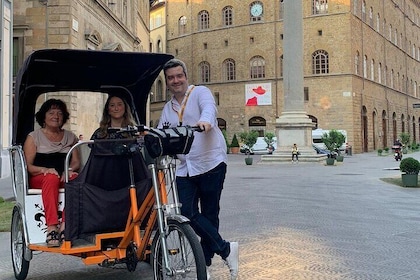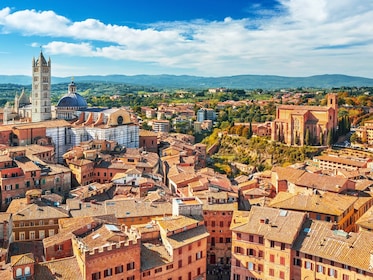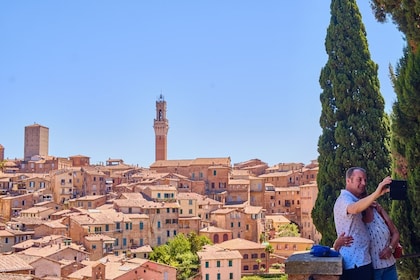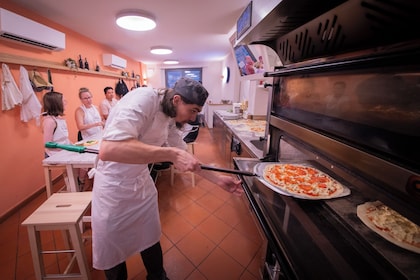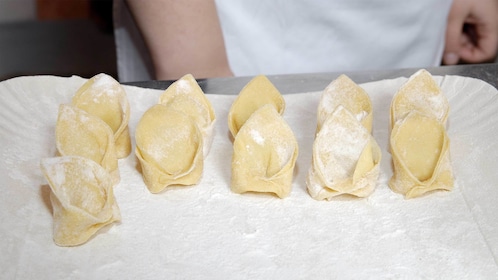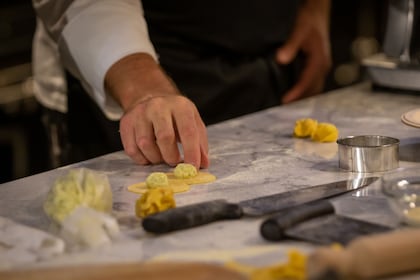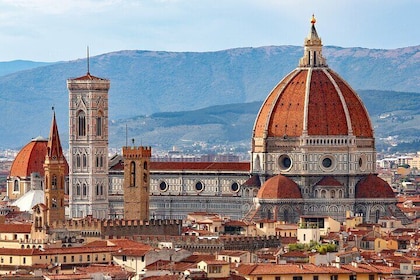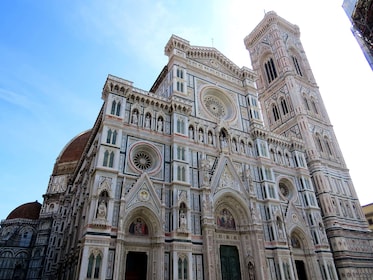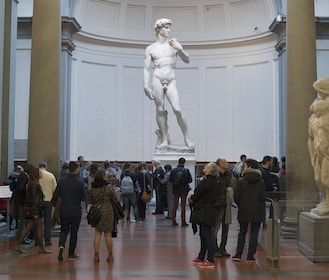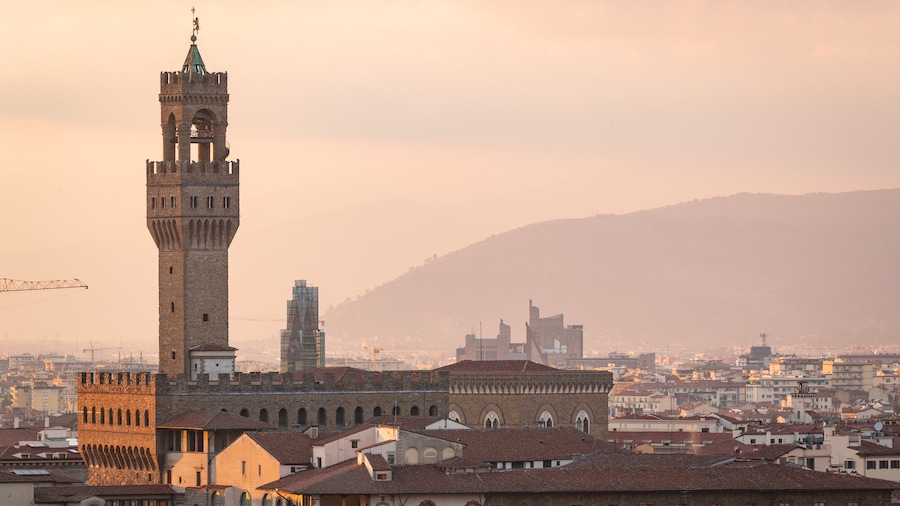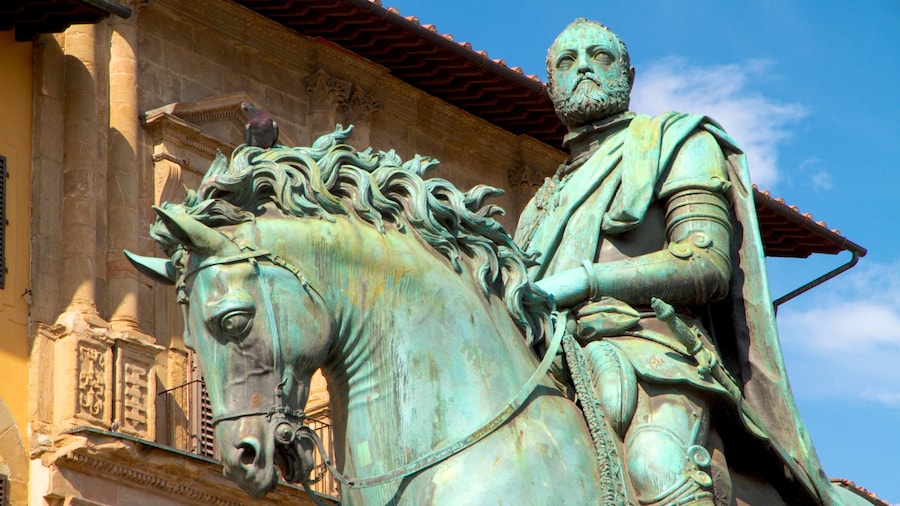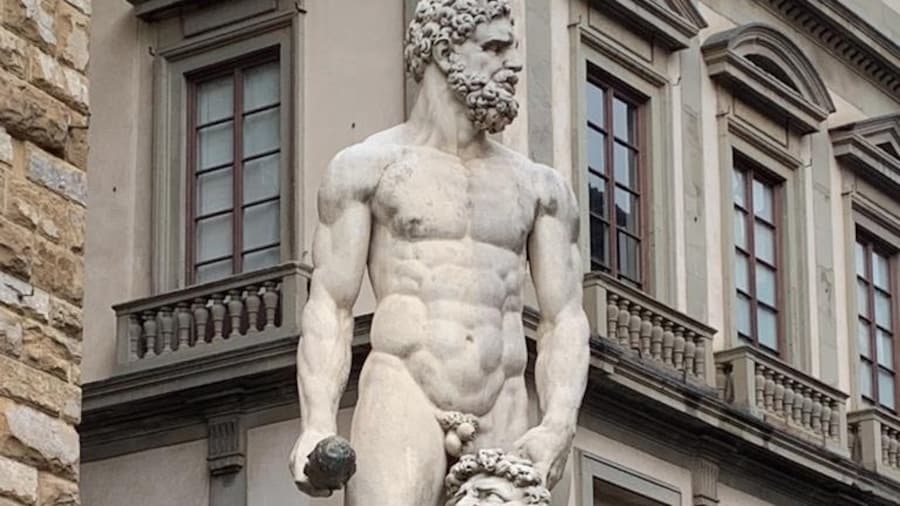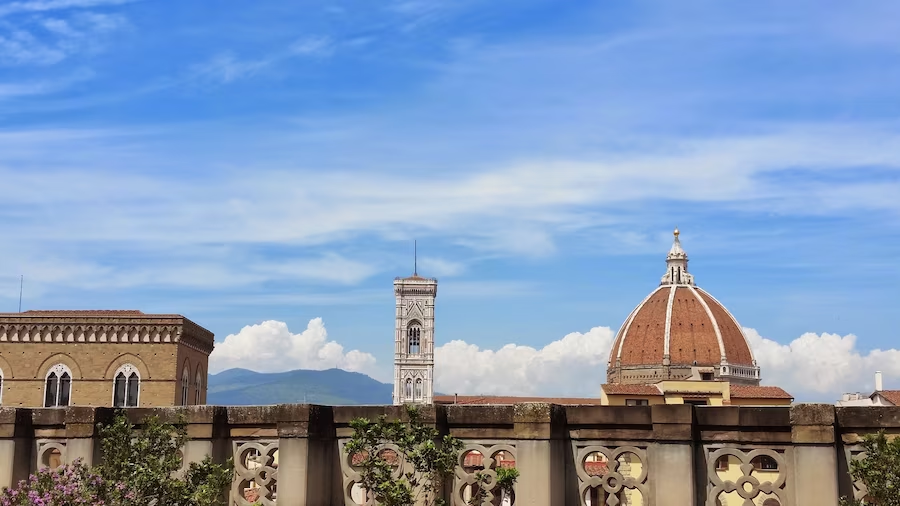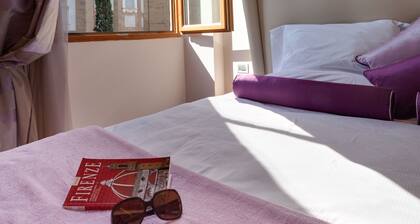Take the opportunity to observe works by some of the greatest sculptors in the history of art by visiting the Loggia dei Lanzi (aka Loggia della Signoria). Over a dozen sculptures decorate this ceremonial arcade positioned on Piazza della Signoria. Dating back to 1376, the Loggia dei Lanzi was used by Cosimo I de’ Medici to house mercenary soldiers and later a place for the Medici family to watch ceremonies.
The loggia’s front features three huge arches supported by Corinthian columns. Guarding the entrance are two marble lions, one that originates from Roman times and the other created in the late 1590s. Icons of the the four cardinal virtues, Fortitude, Temperance, Justine and Prudence, sit in trefoils below the parapet. Further animal sculptures stand at the foot of each column.
Statues appeared in the loggia from 1494, when the Florentines placed them as a form of celebrating their victory over the Medici family. The Medici maintained the tradition after regaining control of the city. Admire Benvenuto Cellini’s bronze Perseus, which depicts a Greek hero holding a sword and brandishing the head of Medusa. Giambologna’s Rape of the Sabine Women is a striking representation of three figures carved from a single piece of marble.
Lined up along the rear wall are statues of Roman empresses and the noblewoman Thusnelda. Other sculptures portray the Rape of Polyxena, who was the daughter of King Priam of Troy, and Giambologna’s Hercules beating the Centaur Nessus. The Menelaus Supporting the Body of Patroclus was relocated from Ponte Vecchio.
The loggia is one of several interesting sights situated on Piazza della Signoria, in the Historic Center of Florence. Note the contrast in architectural styles between the loggia and the austere Palazzo Vecchio nearby. In the piazza view Ammannati’s elaborate Fountain of Neptune, Donatello’s Judith and Holofernes and a replica of Michelangelo’s David.
You can visit the Loggia dei Lanzi for free all day, every day. Be sure to visit the rooftop, accessible via the Uffizi Gallery, for a great view of the tower of Palazzo Vecchio.



